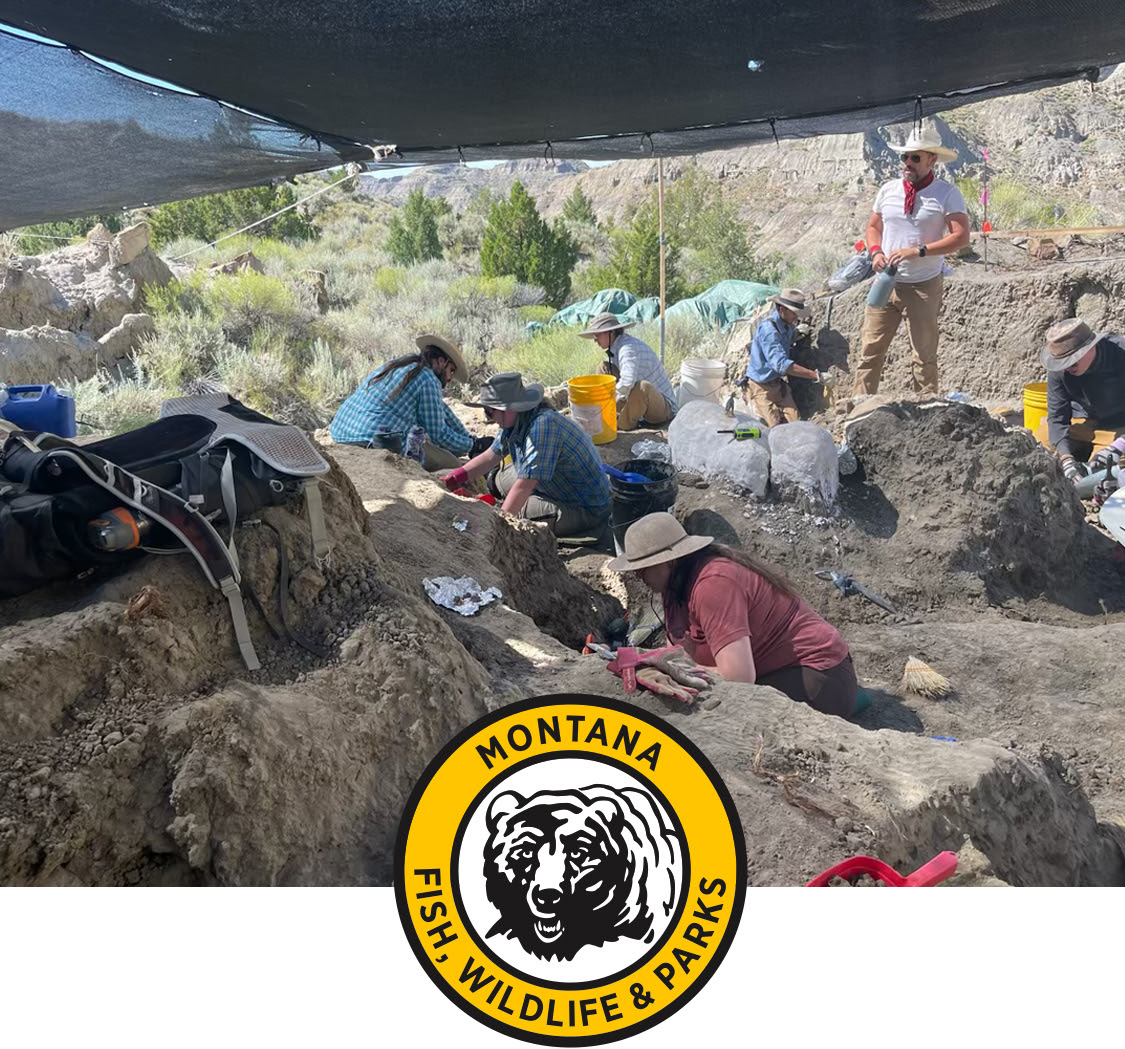DINO DISCOVERY
Identification of New Dinosaur Species Highlights Montana’s Rich Heritage
Montana’s fossil record continues to surprise even the most seasoned researchers. Earlier this fall, paleontologists from the Museum of the Rockies announced the identification of a new species of dome-headed dinosaur, Brontotholus harmoni, from the Two Medicine Formation in western Montana. Dating to approximately 75 million years ago, this compact 10-foot-long pachycephalosaur represents the first of its kind documented in that geologic unit, an exciting addition to the diverse cast of dinosaurs that once roamed the Late Cretaceous landscape of the northern Great Plains.
HELENA – Montana’s fossil record continues to surprise even the most seasoned researchers. Earlier this fall, paleontologists from the Museum of the Rockies announced the identification of a new species of dome-headed dinosaur, Brontotholus harmoni, from the Two Medicine Formation in western Montana. Dating to approximately 75 million years ago, this compact 10-foot-long pachycephalosaur represents the first of its kind documented in that geologic unit, an exciting addition to the diverse cast of dinosaurs that once roamed the Late Cretaceous landscape of the northern Great Plains.
Although the Two Medicine Formation has been studied for decades, Brontotholus harmoni underscores how much we still have to learn. Pachycephalosaurs are known for their thick, domed skulls, and researchers believe these structures may have played roles in display, species recognition or intraspecific combat. The new find contributes to a clearer picture of how regional ecosystems changed as the Western Interior Seaway receded and upland environments expanded. Even in an area as heavily investigated as Montana, discoveries like this demonstrate that our landscapes continue to yield meaningful scientific insights.
While this particular specimen was not found on FWP-managed land, the work provides an opportunity to highlight the collaborative relationship we maintain with the Museum of the Rockies. Through a long-standing agreement, the museum has permission to conduct paleontological research on many of our properties. Each summer, their staff lead a multi-week field school in Makoshika State Park, drawing scientists, students and volunteers from around the world. The field school has produced a wealth of new data about the park’s fossil resources and helps train the next generation of paleontologists.
The Museum of the Rockies also serves as the official repository for significant paleontological remains recovered from FWP lands. Many of the specimens that visitors admire in their galleries, ranging from hadrosaurs to tyrannosaurs, were originally excavated from properties we manage. FWP’s Heritage Program regularly relies on the museum’s specialists to help evaluate project-related impacts to fossil resources, as FWP is required to do under state law. Their expertise ensures that development and stewardship decisions consider the scientific value of these irreplaceable materials.
FWP staff across the agency play an important role in this work. Field crews, maintenance staff and seasonal employees may encounter fossils in the course of their daily duties. While many finds are expected and relatively common, some can be scientifically significant. If you spot a fossil while working in a park, fishing access site or wildlife management area, please let the Heritage Program know. A quick photo and location description can make all the difference. You never know when a small observation might lead to a big discovery.
For those interested in digging deeper into the science, the formal description of Brontotholus harmoni was published earlier this month in the Zoological Journal of the Linnean Society. It’s a fascinating read and a good reminder that Montana’s heritage, natural and cultural, is dynamic, evolving and full of unexpected stories still waiting to be told.
https://fwp.mt.gov/homepage/news/2025/nov/1119–identification-of-new-dinosaur-species-highlights-montanas-rich-heritage
